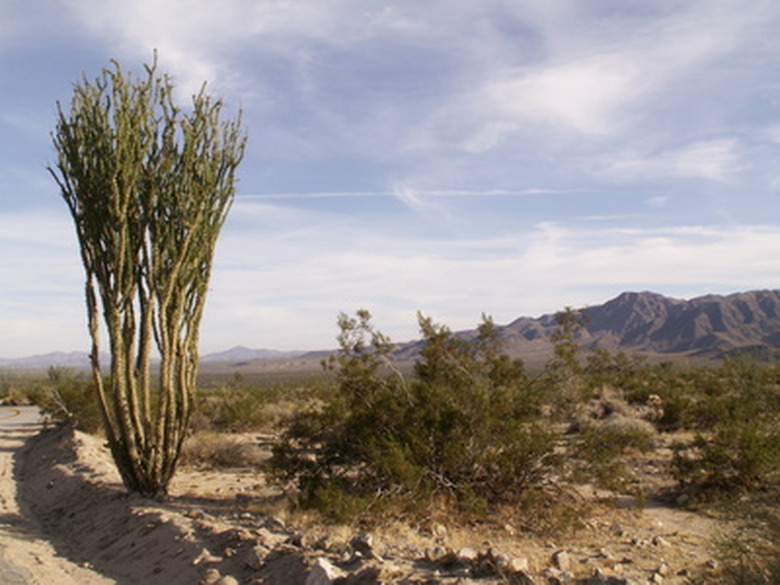Erosion Control & Desert Plants
One of the joys of traveling in the American Southwest is the capacity to see for miles in all directions. First-time visitors may comment on unobstructed views or may feel they are looking at nothing. While some may describe desert plants or animals as "tough," desert areas have fragile ecological systems. It is important to know about plants that sustain these fragile environments.
Kinds and Causes of Erosion
Much erosion is caused by weather, especially wind and water. Unobstructed winds can blow away fragile thin topsoils. Stony sections of desert are vulnerable to further erosion by flooding. Flash-flooding–the appearance of more storm water than sand and rocks can absorb–is a threat to campers and hikers in desert environments.
- One of the joys of traveling in the American Southwest is the capacity to see for miles in all directions.
- Flash-flooding–the appearance of more storm water than sand and rocks can absorb–is a threat to campers and hikers in desert environments.
Controlling Wind-Caused Erosion
Low-water-demand trees and shrubs are the best defense against wind-caused erosion. Most desert plants tend to be self-selecting natives or near-natives, needing alkaline soil, little water and high heat in most growing situations. Desert gardeners can choose from a variety of trees (palo verde, live oak, mesquite and desert willow) and shrubs (acacia, Texas ranger, yucca and wooly butterfly bush). For planning, gardeners should note that trees tend toward the 25- to 30-foot-range maximum, and some shrubs can reach nearly the same height.
Addressing Water-Caused Erosion
Smaller plants–like vines, blooming perennials, and ground covers–contribute to water-caused erosion. Able to tolerate dryness, desert plants tend to send down strong roots to take advantage of what ground-water they can reach. Just as desert plants tend to have multiple stems with smallish leaves and flowers, they also tend toward multiple roots in dense clusters. Plantings of these soil-holders, on slopes especially, can interrupt potentially damaging water flow, diverting it in a number of directions and slowing its velocity. Muhly grasses, virgin's bower and Oregon grape are only a few examples of plants suited for landscaping and water-erosion control in desert areas.
- Low-water-demand trees and shrubs are the best defense against wind-caused erosion.
- Most desert plants tend to be self-selecting natives or near-natives, needing alkaline soil, little water and high heat in most growing situations.
Accommodating Existing Plantings
Desert ecosystems often address their own difficulties. Desert plants may tend toward smaller leaves, branches, flowers and size than counterparts in wetter climates. Micro-lichens, mosses, cyanobacteria (formerly blue-green algae) and micro-fungi may look very much like the soil they cover and inconsequential in height and spread. Their impact on erosion and nutrition for other plants is, however, substantial. Hiking and vehicle traffic can crush functioning soil crusts. Seemingly empty areas may not be empty.
Strategies to Improve Erosion Control
One of the major strategies needed to garden or plant intelligently in desert environments is a willingness to learn from what already works. Consulting sources of native plants, environmental organizations and local nature centers will help you become acquainted with ecosystems that are simultaneously tough and delicate. Proceed with caution for growing success in challenging conditions.
- Desert ecosystems often address their own difficulties.
- Consulting sources of native plants, environmental organizations and local nature centers will help you become acquainted with ecosystems that are simultaneously tough and delicate.
